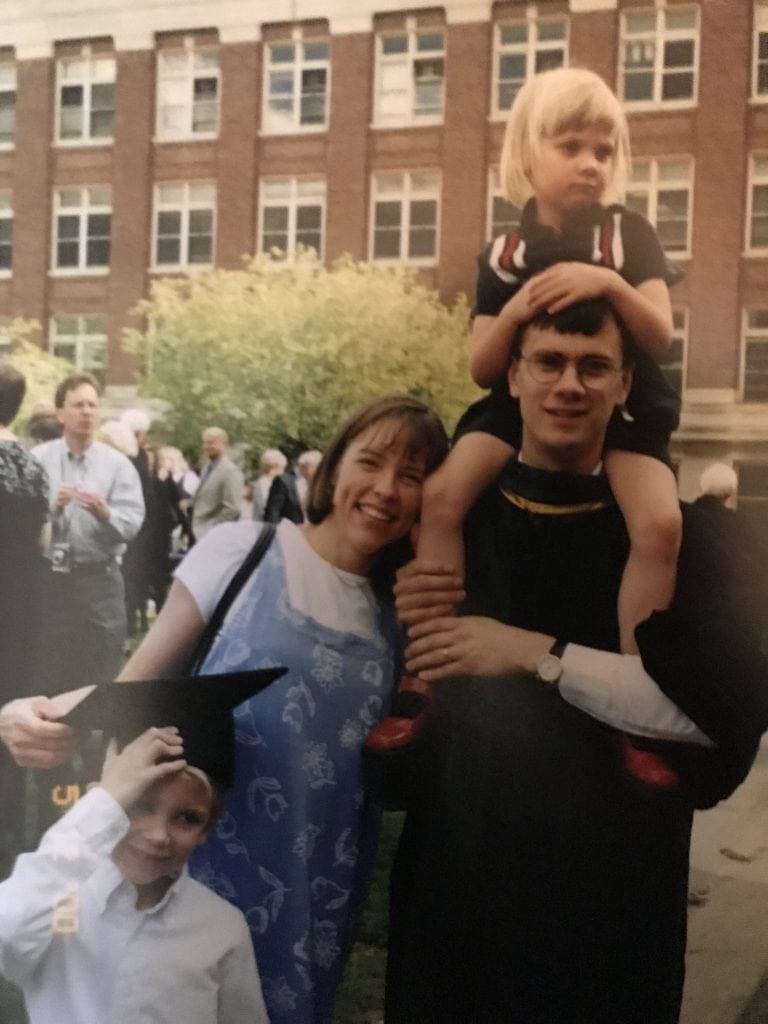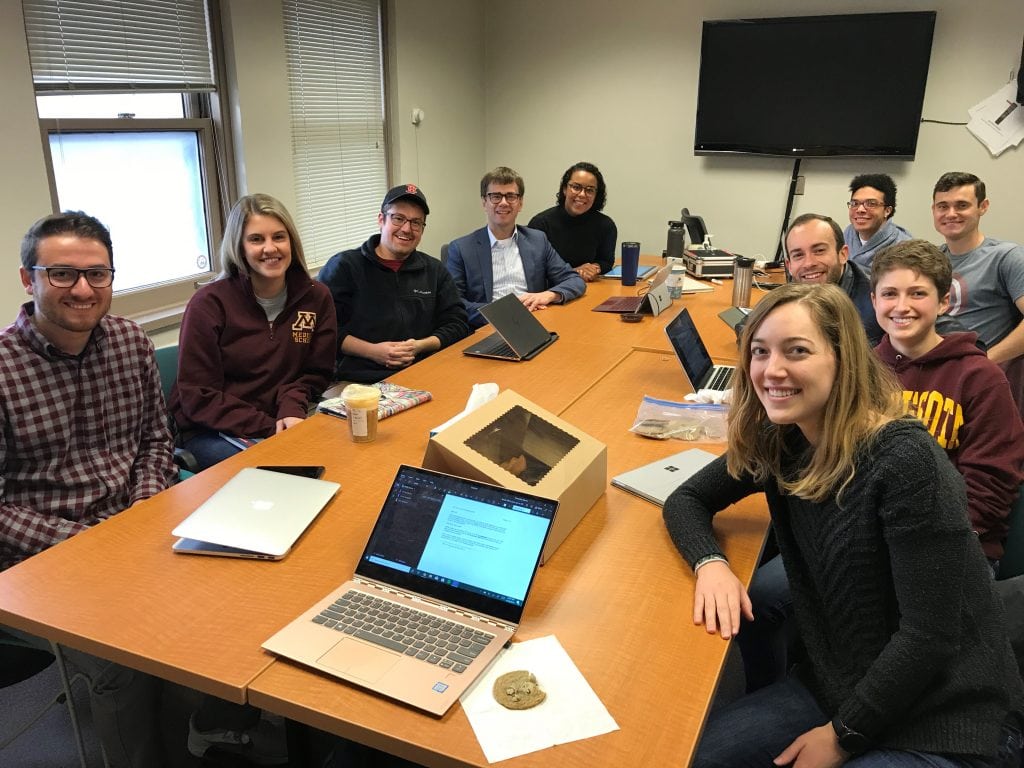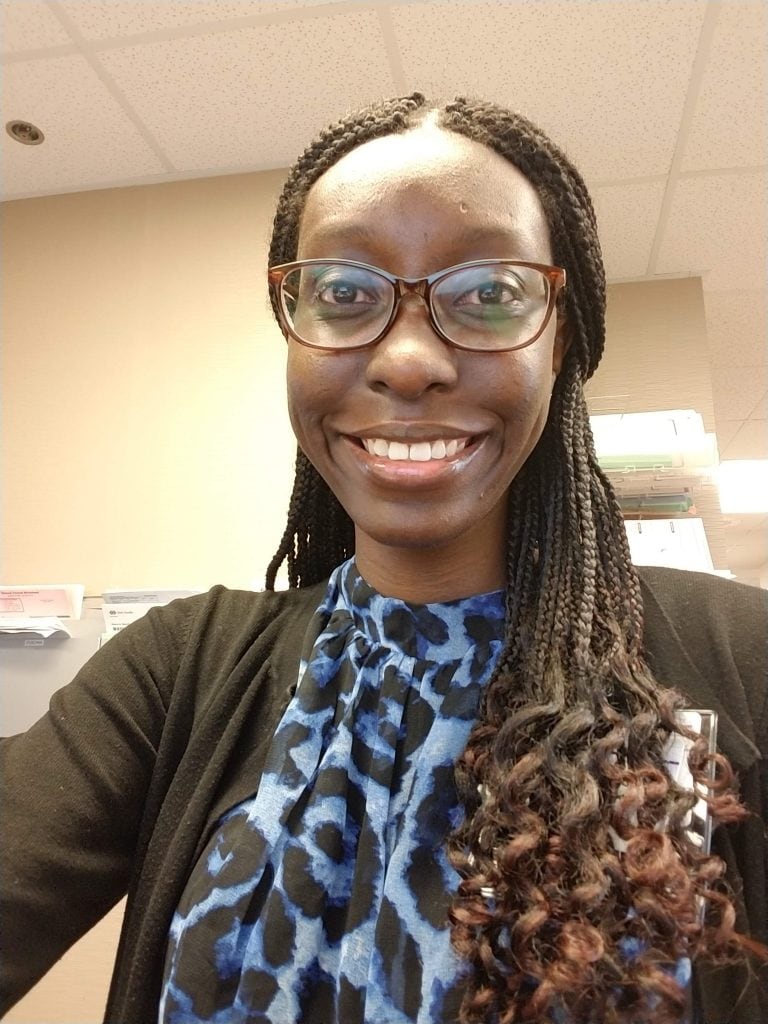
Somewhere near the top of my “favorite things about my job” is working alongside medical students. It’s a privilege to get to teach – and learn from – medical students from the University of Minnesota Medical School as they are just starting out on their careers.
Sadly, one of the many casualties of this awful Covid-19 situation is that the medical students are gone for a bit. Due to shortages of masks and gowns, the uncertainties of this new disease, and the need to limit exposures, the students have been doing distance learning for the past few months. That means a lot less energy, curiosity, scholarly discussions, bedside teaching, group problem solving, and general excitement about medicine. Students are definitely a positive addition to our healthcare systems and I really miss them. And if you are ever a patient wondering about going to a teaching hospital, I might add that you should feel great about doing so. Students add a valuable depth of curiosity and attention to the well-being of patients. And teaching hospitals are by their very mission really good at staying abreast of latest medical science. The medical students keep us on our toes!
During each academic year I encounter loads of students. In this post I am going to highlight several and shine the spotlight on the next generation of doctors. I thought you ought to meet the men and women who may be your doctor someday and learn a bit about the process of medical education. Each one has given permission to be included. It’s also the 20th anniversary of my own graduation from med school (see photo above) so here’s a nod to the past while looking to the future.
The first years: Out of the classroom and into the hospitals
I know this first bunch of students pretty well. I met the 9 of them literally in their first month of medical school in the fall of 2018 for their Foundations of Clinical Thinking course which I co-facilitated with my friend (and superb medical educator), Dr. Anne Pereira. Our merry band met periodically for the entirety of their first and second years of medical school as we learned to “think like doctors.”
For several hours each week we’d sit around a table and talk through tough cases. The students did most of the work while Anne and I provided color commentary. Some of us talk more (I’m guilty of talking too much, I know, but I’m working on it!) while others are more subdued. Often someone writes on the white board. Usually one of the students brings treats. OK, correction, one of the students usually brought the treats (thanks, Katie!). Sometimes we’d get off track, joking about this or that (does Notre Dame even have a football team?), sometimes we would have a serious discussion about end-of-life issues. Always, though, we grew together as friends and colleagues.

We did that for two years. Then SARS-CoV-2 hit and that ended our group meetings.
(In case any of the students are reading this, I purposely wrote the official acronym for the coronavirus since medical acronyms often came up in our group discussions and I fully intend to pile onto your misery with yet another. BMP, HgB, PMH, ROS, VTE, DVT, NSTEMI, CVA, MVA, GSW, COPD, HIV, CML, LFT, BLT, and on and on and on and on! To that list we can add SARS-CoV-2.)
At the end of the second year of medical school, Anne and I didn’t get to hang out with our FCT group as our last few group meetings were virtual. Even our end-of-year “party” was via Zoom. I guess that’s better than nothing . . . but I miss this bunch! When I’m an old man, one of you may be my surgeon or my Emergency Med doctor, or my grandkid’s pediatrician. One of you may read my x-rays. Maybe one of you will be my primary care doctor and recommend I exercise more and yell at me to get my PSA checked. Just remember when you are hot shot doctors, I knew you when you were wide-eyed first year medical students when you didn’t know diddly about the spleen. Oh wait, I still don’t know diddly about the spleen so I guess I can’t hold that against you.
So here’s a shout out to my friends from FCT group. I’ve seen you go from that “OMG” look in your eyes in the first weeks of med school to your “I can’t wait to start seeing patients” look now that you are ending your 2nd year and entering the life-changing clinical years. You are ready and you are going to rock your clinical rotations and I really hope I’ll see some of you on the hospital wards at Hennepin Healthcare! (Don’t worry, I’ll go easy on you during rounds!)
They even let us take a picture one day in the swanky little room in the med school where we met. That’s our group of newly-minted 3rd year medical students in the photo above: Peter Kassis Akal, Heather Oas, Justin Lynch, Cecilia DiCaprio, Christian Ndekwe, John McCarron, Charles Warner, Katherine Casty, and Samantha Gibson.
The homestretch: the intensity of the clinical years
I met Anna Ayers Looby last fall when I barged into the team rounding room on one of the nursing units of Hennepin County Medical Center. These team rooms are where our “rounds” happen with teams consisting of an attending physician (me), a senior resident physician, a couple of interns, and one or two medical students. Often there is a pharmacist present and sometimes some other health professionals. Usually the room is strewn with empty coffee cups growing various fungi in them, a half-eaten pizza from 6 days ago, a bunch of white coats on hooks, and for some reason a disco ball or a stuffed unicorn sitting on the shelf.
Anna was starting out her 3rd year of medical school and thus she was learning how to put her book knowledge into real clinical practice with real people, real diseases, and real consequences.
Since my time with Anna nearly a year ago, she has now started her 4th and final year of medical school, which is that transition year in which medical students are at the top of their game in terms of book smarts. I always thought that some of the most knowledgeable people in medicine are 4th year medical students. They know just about everything, probably because they are always getting ready for some life-or-death high-stakes exam.
This is the year of medical school where students also have to make the huge decision about what speciality they wish to pursue. Surgery? Pediatrics? OB-Gyn? Family Medicine? Radiology? Or the best one, Internal Medicine (that’s my specialty!). So it is a big year.

I remember Anna on that rotation last fall. She was really smart and she gave superb presentations. Nobody is born with the skills to do a high-quality presentation of a patient’s case to a veteran attending physician in front of a group of people all of whom are senior to you in experience. It can be an intimidating task but it is a critical skill to learn as a medical student. Some students ramble on for what seems like hours and make the attending physician tend toward daydreaming about what’s for lunch. Others finish their thoughts in about 60 seconds, unsure of what to say next and having forgotten some key bit of information, like say, the vital signs. But Anna was just great at her presentations.
But this isn’t supposed to be a critique of her clinical skills. What I remember most about Anna is her obvious leadership skills in patient advocacy and her commitment to society. She is the type of future leader who will change things. She is grounded in the belief that we need to strive for justice in healthcare for all people, especially the most vulnerable among us. She’s open about that and it is incredibly inspiring.
Anna tells me that she is leaning toward becoming an Obstetrician-Gynecologist. If that pans out, there will be countless women who will benefit from her care. No matter what she ends up doing, though, Anna will make a difference. Although I must say I think Internal Medicine provides better donuts on rounds. Just throwing that out there for her consideration.
A new start: our newest doctors
These last two medical students are not actually students anymore as I write this. They are real doctors now, having graduated from medical school last month and just this week starting up their internship. I met them in the past on our inpatient patient care teams at Hennepin Healthcare/HCMC. Their stories are so different from my own and so I want to celebrate these two new doctors who both happen to be people of color and spent some of their lives in East Africa. Please read about them:
Dr. Mohamed Artan came to Minnesota most recently from Tennessee after his family escaped the conflict in his native Somalia and subsequent life as refugees in Kenya. With that background, he studied Biochemistry and Cellular and Molecular Biology and worked as an East African cultural liaison. In med school he worked to mentor and empower students of color. I swear the students are all over-achievers these days! I found in Artan an engaged, animated, inquisitive guy who gave rapid-fire patient presentations, thorough and complete, and his enthusiasm for learning was contagious. Here’s a brand new doctor who has seen inequities in the world and has the ability and commitment to do something about it. So glad he will be training with us here in Minneapolis in Internal Medicine.

Dr. Olivia Ondigi was also in her 3rd year of medical school when I met her. She is smart and has a keen curiosity. She also has a humble and kind demeanor along with a rich and deep perspective on medicine and society. I remember talking to her about her life as a US-born woman of color who grew up in Kenya, then returned to the United States. As such she brings a perspective to medicine so desperately needed in our profession. Olivia readily speaks with empathy for people who are unlike herself which, when you think about it, is really what you hope a doctor will do. Couple that with a warm personality and Olivia is exactly what this world needs in a doctor. She’s off to Virginia now to pursue her Internal Medicine residency and I can’t wait to see where her career takes her.

So there’s a glimpse at the future of medicine. I intended to write this post to highlight the absence of medical students in our clinical settings and relate that to the Covid-19 pandemic and how that bummed me out. But as I wrote it and reflected on this bunch, and as I wrote their names and posted their pictures, I didn’t want to talk about Covid-19. I felt hopeful. This cross-section of students from the University of Minnesota Medical School reminded me that the future of medicine is in good hands.
So for letting me embarass you a bit on this post and for your commitment to the patients you are privileged to serve, thank you to Peter, Heather, Justin, Cecilia, Christian, John, Chuck, Katie, Sami, Anna, Artan, and Olivia.
David
Follow this blog by including your e-mail in the box on this page and follow me on Twitter @DrDavidHilden if you wish.
